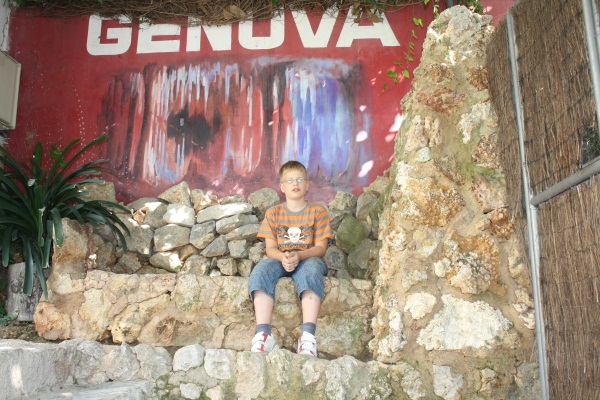Flowstone
caves
Flowstones are
composed of sheetlike deposits of calcite formed where water flows
down the walls or along the floors of a cave. They are typically
found in "solution", or limestone caves, where they are the most
common speleothem. However, they may form in any type of cave where
water enters that has picked up dissolved minerals. Flowstones are
formed via the degassing of vadose percolation waters. Flowing
films of water that move along floors or down positive-sloping
walls build up layers of calcium carbonate (calcite), aragonite,
gypsum, or other cave minerals. These minerals are dissolved in the
water and are deposited when the water loses its dissolved carbon
dioxide through the mechanism of agitation, meaning it can no
longer hold the minerals in solution. The flowstone forms when thin
layers of these deposits build on each other, sometimes becoming
rounder as the deposit gets thicker. There are two common forms of
Flowstones, Tufa and Travertine. Tufa is usually formed via the
precipitation of calcium carbonate and is spongy or porous in
nature. Travertine is a calcium carbonate deposit often formed in
creeks or rivers, its nature is laminated and often times includes
such structures as stalagmites and stalactites.
There are more than 200
caves located at the island Majorca. Only five can be visited, they
are all flowstone caves.
The smallest of them
is the cave of Génova in Palma. It differs from other caves on
Majorca, especially because there are formations known as
Coraloires. According to studies of the university of the Balearic
Islands this appearance is caused of magnesium compound which
proceeded around four million years ago. Inside the cave you can
also discover different colours at the rocks. They are caused in
different chemical elements present in the water like iron oxide
(brown), cupper (red), lime (white), black (manganese) and green
(nickel).
The cave were
discovered when a cistern should be built there. The entrance of
this caves lies in the restaurant Ses Coves, there you can get
tickets for a guided tour in familiar atmosphere.
The caves can be
visited daily from 10:00 to 13:30 o'clock and from 16:00 to 19:00
o'clock in summer and from 10:15 to 13:00 o'clock and from 16:00 to
18:00 o'cock in winter. Price for the entrance: 9
€
In order to be allowed
to log this earthcache, send a mail to JJJJ.xxxxxxxxx@gmail.com, after replacing
"JJJJ" with the answer of question #1 und "xxxxxxxxx" with the
answer of question #2!
1. In which year
(JJJJ) was the cave
discovered?
2. Enjoy your walk
through the cave. At the end of it you will spot a stony column,
that is majorcawide unique as it has a very special physical
characteristic. Name the material (xxxxxxxxx) that the column consists of! (english
or german)
AT THE ENTRANCE OF THE
AREA, THERE IS A LARGE PICTURE PAINTED AT THE WALL. THIS PICTURE
MUST BE PHOTOGRAPHED WITH YOU AND/OR YOUR GPS AND ATTACHED TO YOUR
LOG (see example-picture), OTHERWISE YOUR LOG WILL BE
DELETED.

(If you don't want to spent the money
for the entrance, just try to "Google" it and discuss the answer of
question #2 with the owner!)